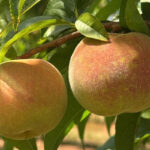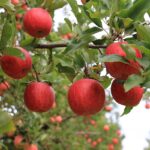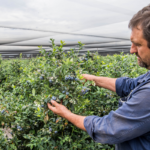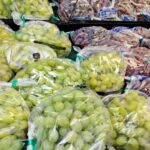Australia kicks off cherry season with high hopes

Cherry Growers Australia on Sept. 28 kicked off their season, offering a webinar covering seasonal conditions for crops, export and market updates and pests and diseases.
Patrick Ulloa, export development coordinator for Cherry Growers Australia, discussed export updates for the industry, claiming they had a very successful participation in this year’s Asia Fruit Logistica in Hong Kong and noticed strong interest in Australian cherries.
In order to explain the export process, Ulloa separated markets into three categories: unregulated, moderately regulated, and highly regulated markets.
“Hong Kong, Singapore, and Malaysia are unregulated markets meaning they are the easiest ones to send our cherries to because we practically just need an export permit and ensure we comply with the MRL. With proper pricing and quality we shouldn't have any issues getting the fruit there,” says Ulloa.
However, moderately regulated markets including Indonesia, the United States, and Vietnam have more regulations, declarations, and permits which can make the process a bit more challenging.
“Highly regulated markets like Korea, Taiwan, and China are even harder because you have to comply with many more restrictions and you have to be accredited and audited, but sometimes it can be more rewarding,” adds Ulloa.
Season conditions
Ulloa says weather conditions have been “excellent” in many parts of Australia.
Chris Lucas, from the Bureau of Meteorology, spoke about seasonal conditions and the outlook as of October 2023.
Lucas says that the Bureau recently declared the El Nino phenomenon in Australia, which leads to warmer and dryer conditions over spring and summer. With conditions expected to persist until early next year, this might bring a delayed start to the wet season in the north, and an enhanced risk of wildfires.
Warmer conditions are good for pollination of cherries during this time of the season.
Marketing
Gillian Reilly, head of marketing at Hort Innovation, spoke about the outlook of the industry, and the different strategies to grow the industry in terms of exports.
“The transformation that has happened with the strategy we created to drive the value of cherries domestically and overseas has been to come up with a vision for cherries to make them the most premium fruit Australia has to offer. We want to grow the value perception with both retailers and consumers, and our goal is to grow past 6 months household penetration from 40%,” says Reilly.
Locally, the opportunity for the industry lies in the 61% of households that have never tried cherries, as well as consumers that buy only once or twice per season.
“The key to unlocking future growth is to understand and address barriers to purchase,” says Reilly.
Pricing and the fact that consumers “forget about the fruit” in the offseason are the main barriers to tackle. In order to address these issues Reilly highlights three important characteristics of the fruit. First, the delicious taste, and the enjoyment consumers get out of eating the fruit. The festive nature of the fruit and the strong association it has with the festive season.
Regarding the high price, Reilly believes it is an opportunity to use it as an affirmation that they are an exclusive, premium product that is worth the money.












































